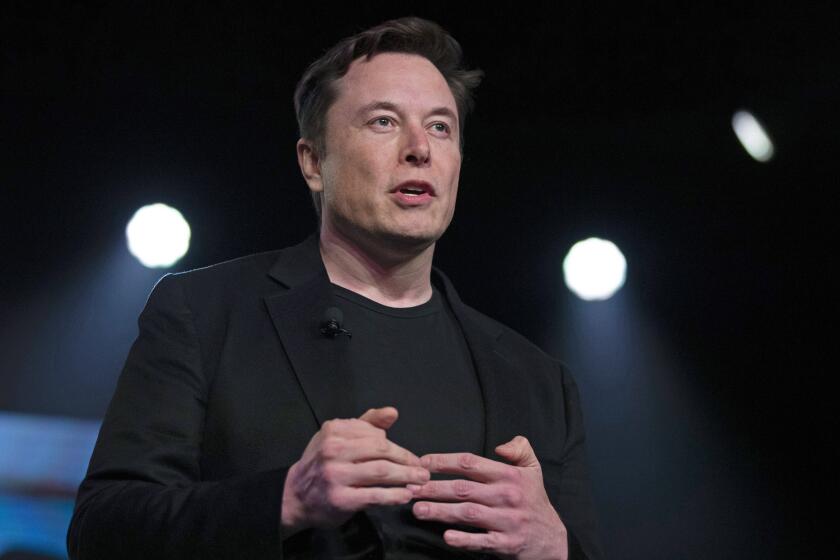Ring modernized the doorbell, then its inventor, Jamie Siminoff, went to war against crime
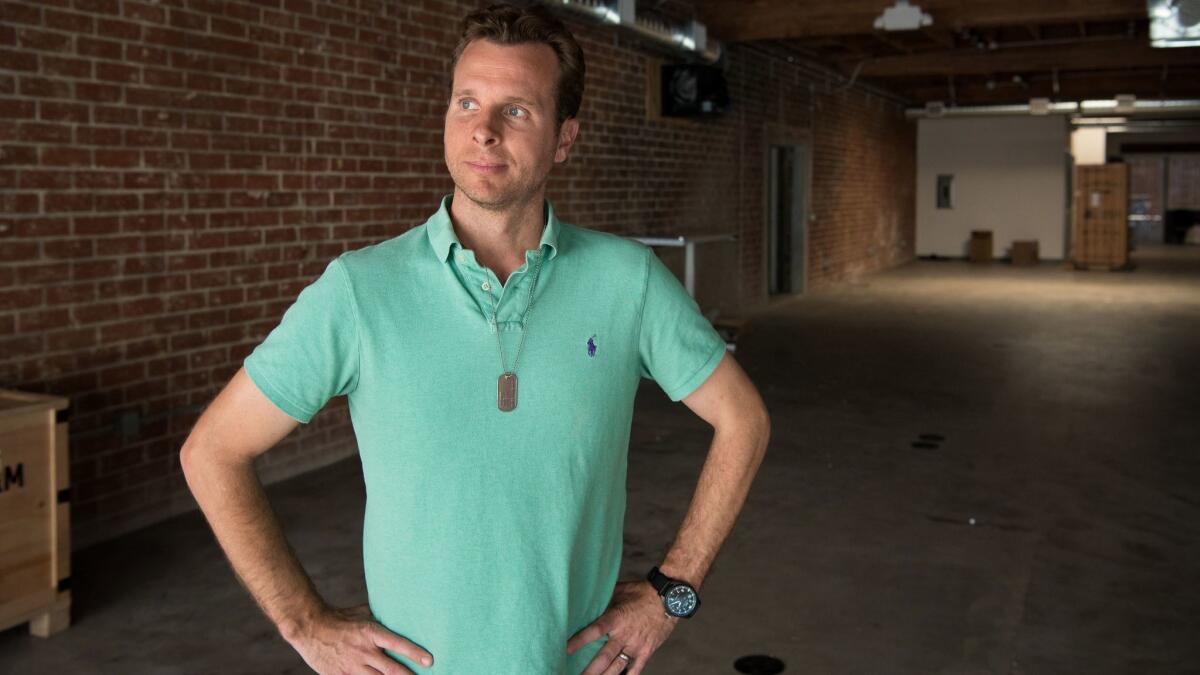
- Share via
If booming sales, expanding offices and a parade of TV commercials hadn’t put Jamie Siminoff on the radar of the home security industry, an early March incident certainly did.
Four hours after the rumored collapse of a merger between a software start-up and security giant Honeywell, Siminoff took a cross-country red-eye, ready to swoop in with an offer of his own.
Avoiding a drawn-out acquisition process, Siminoff in a single day hired all 75 of the beleaguered start-up’s employees to work for Ring, his Santa Monica video doorbell company. Caught flat-footed, global giants that were weighing a purchase howled at Siminoff by phone.
“They sat back, futzed around and let these people lose their jobs and now they want to harass” me, he said. “It’s unbelievable. It would have been a rounding error for them.”
From his parent’s basement to his own garage, Siminoff, 40, has long found opportunity in hacking his own path and transforming undervalued assets into novel products, no matter the burns and bruises accumulated along the way.
He’s twice sold companies. But as Ring’s chief executive, he wants to build for decades a global technology company that reimagines home security and eradicates crime.
Ring's journey started with a $200 doorbell that streams video to residents’ smartphones and enables them to talk back to guests. It promises peace of mind with a tinge of satisfaction, helping homeowners feel safe when someone knocks on the door or seek retribution when the neighbor’s dog leaves a mess on the lawn. Footage of burglars and package thieves from the doorbells has become a fixture of Facebook and local TV news, while Ring ads featuring Siminoff are mainstays on HGTV and Fox News.
Ring's key stats
- $160 million: 2016 sales estimate
- 1 million: lifetime customers
- 3 billion: motion alerts or doorbell rings
- 1 million: video doorbells sold globally last year, with Ring being about 80%
- 0: law enforcement requests for video fulfilled without user consent
Sources: Ring, IHS Markit
Sales of video doorbells are growing faster than for any other home device, with Ring the leader. Formally Bot Home Automation Inc., the company expanded into security cameras and floodlights. And Siminoff’s hiring spree in March brought him a team tasked with syncing more devices to Ring’s monitoring app.
But with no profit, $209 million in venture capital and a valuation of around $460 million, Ring faces a massive challenge in trying to outlast better-funded imitators.
It also must survive Siminoff’s frenetic style as it eyes a possible stock market debut. The more than 1,000-employee company has an informal management structure and no departmental budgets.
Siminoff’s intense involvement in customer service and product design have served Ring well. But the next year could reveal whether his tenacity — which turned a picked-on kid into one of the nation’s hottest hardware entrepreneurs — delivers the crime-busting giant of his dreams or the worst scar of his life.
Siminoff’s interest in nuts and bolts came from his father, who co-owned a plant forging steel pipes for oil refineries. Siminoff whacked weeds and drove forklifts during summers. But after school, he tinkered in the basement of their rural New Jersey home. Using his father’s spare tools, Siminoff manufactured humane mouse traps, heated blankets and remote-controlled cars.
“People would drop by, and it became a joke for them: ‘We got a new TV. I know Jamie wants to take it apart,’” Siminoff said.
He had access to epoxies, firecrackers and gunpowder. His parents never stopped him, even when they probably should have. Scars on his arm show the results of homemade knives and toy airplanes. A pyrite burn on his thumb came from an Anarchist Cookbook recipe downloaded on dial-up Internet.
The target of bullies in public high school, he pleaded his way to a ritzy private academy after freshman year. The surrounding wealth inspired Siminoff to apply to Babson College, a private business school.
The C-student lucked his way in by earning A’s his final semesters. But the studying binge had more to do with proving to his parents he deserved the convertible Land Rover Defender 90 coupe that he’d plastered pictures of in his room.
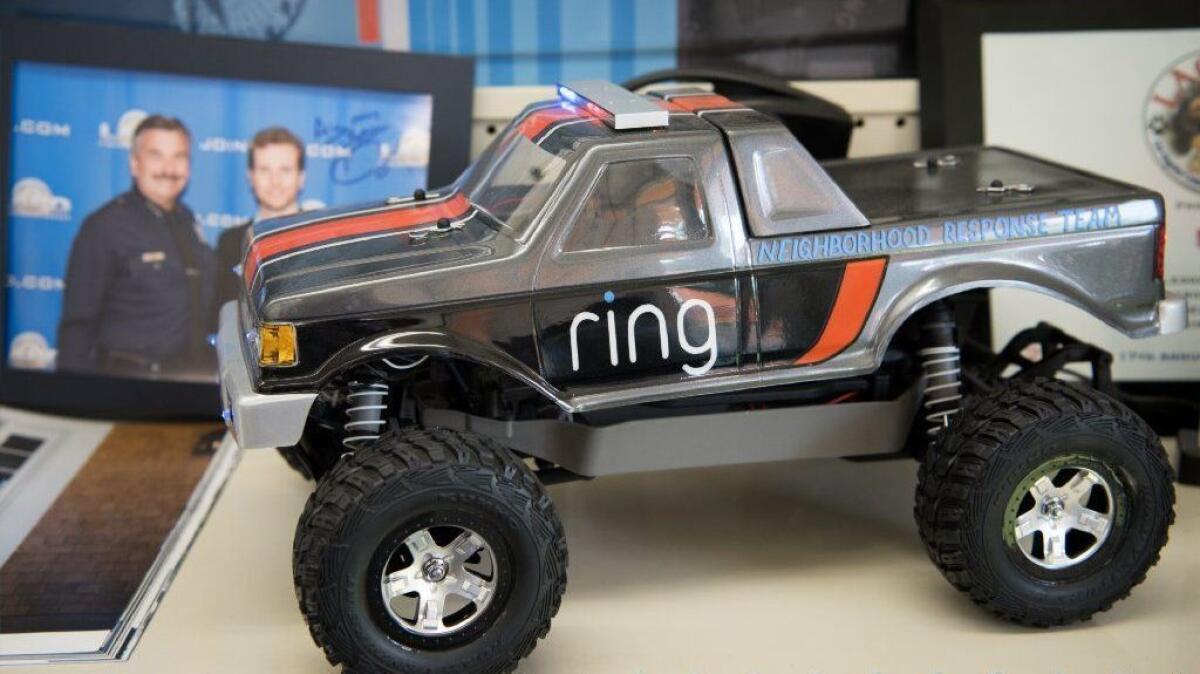
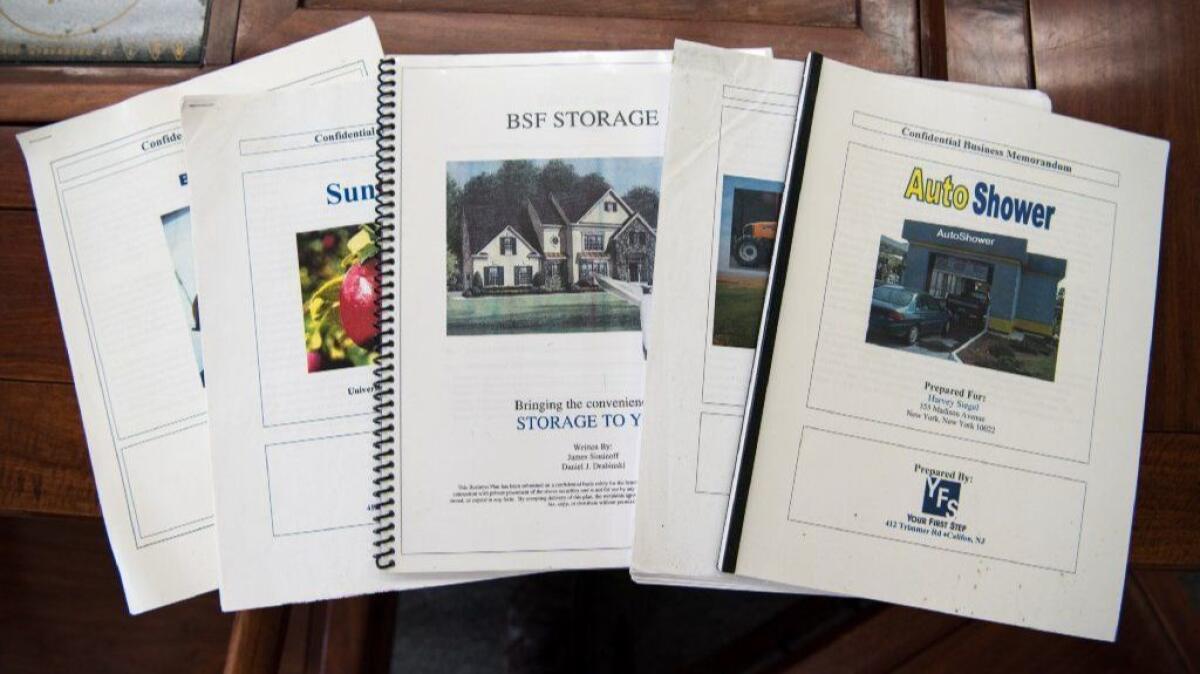
Siminoff won Babson’s business planning contest and then made money drafting real briefs. He took one further, starting an online calling service in Bulgaria with a tech-savvy partner.
When the partner quit, Siminoff pored over a technical manual at Barnes & Noble to resurrect the service. He not only succeeded, but also found the right time to merge with a bigger firm amid rising competition in 2001. He later sold his stake for more than $1 million.
His second start-up, which outsourced voice mail transcription, sold in 2009 for $17 million. But Siminoff was unsatisfied; he had bigger ambitions.
The next venture wasn’t just started out of a garage. It was formed because of the garage. As he and two buddies plotted new business ideas in what he calls the “two-car office” of his woodsy Pacific Palisades home, Siminoff realized he couldn’t hear the doorbell. So he modernized it to get summons over Wi-Fi and live video from the porch. Adding Internet connectivity to appliances was a growing trend, but in 2011 the introduction of live video represented a major breakthrough.
Ring's supply chain
- Taiwanese companies Chicony Electronics and Ennoconn manufacture Ring products in southeast China.
- Ambarella supplies video processing technology.
- Amazon Web Services stores videos online, though Ring is considering developing its own storage system.
- Ring relies on retailers to monitor supplier labor and environmental practices.
What Siminoff originally called DoorBot also offered his wife convenience and security. She encouraged Siminoff to market it, though he jokes she may have just wanted the garage crew to stop stinking up the bathroom.
The team became among the first to pack a high-definition camera into a battery-operated device. The group also introduced a first-of-its-kind motion detector to enable users to control the sensor’s direction.
Consumers trashed the first version because of glitches, which would have doomed Siminoff if not for free publicity.
Siminoff turned to ABC’s start-up investment show "Shark Tank” for redemption funds. The sharks rejected him. But his TV appearance in November 2013 drove $5 million in sales, giving the company new life.
“Nothing ever will supersede ‘Shark Tank.’ We’d have been gone,” Siminoff said.
Mike Jones, chief executive of Santa Monica business incubator Science Inc., met Siminoff around then and recalled someone who thrived on the rejection.
“Many entrepreneurs have something to prove, but it sounded like he had something to prove on a really big level,” Jones said. “He had so much fire in him to prove he had what was going to be … a mega-company.”
Ring is up to a million customers and estimated sales last year of $155 million. Insurers subsidize the doorbells for customers and police departments have praised them. After the company gave away doorbells in a Koreatown neighborhood, LAPD and Ring announced last year home burglaries declined 55% in six months.
Industry-funded studies say alarms drive away burglars, justifying the $20 billion annually spent in the U.S. on the systems. But researchers, lacking studies on newer technologies, doubt video doorbells installed without other deterrents make a dent. Ring hasn’t sought peer review or provided detailed data about its Koreatown experiment.
Ring investors and security experts say the company has more work to do to prove that covering a neighborhood with Internet-connected cameras reduces crime.
Siminoff disputes concerns his products foster a surveillance state because users administer the cameras. But Ring can control much of the data produced by those cameras, and privacy concerns could limit the company’s potential.
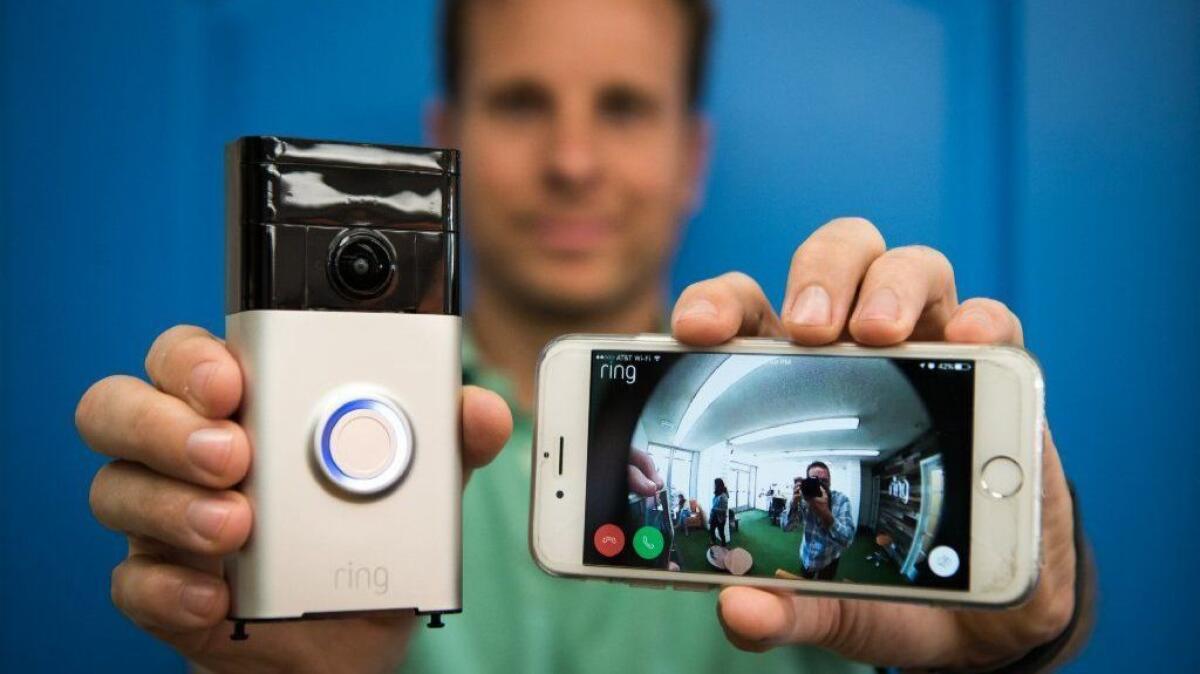
Ring cameras can reveal a neighbor’s infidelity or put a face to serial burglars, but there’s no telling what Ring could understand by analyzing feeds en masse. For instance, the company associated a big spike in doorbell rings with people attending Super Bowl parties.
That’s just a start. Siminoff expects to launch software over the next year that identifies objects in videos, which could enable users to avoid getting notifications when, for example, a dog walks by. Ring can develop that technology because users pay $3 a month to store encrypted videos from motion detections and doorbell rings. The company can view footage, providing heaps of data from which it can learn.
Users may question Ring’s access considering the company’s cybersecurity record. Researchers once criticized its doorbell for failing to secure users’ Wi-Fi passwords from hackers. A botched data migration let a few users see video from someone else’s doorbell. In a recent case, the company caught flak for transmitting innocuous data to a Chinese server.
Investors stand behind Ring because they see Siminoff’s devotion to customers. Despite investors’ reservations, Siminoff’s aggressive moves to build trust with users have paid off.
There was the heavy spending early on for TV ads, customer service agents and doorbell giveaways — and a $1-million check for the short, catchy URL Ring.com that Siminoff insisted was an essential foundation.
He’s long said that he would fly anywhere to help people struggling with installation, which he has done dozens of times. He has enough confidence in the doorbell that Ring is paying the deductible for some users who suffer theft.
No matter the cost, “he goes to bat for customers in ways many founders in Silicon Valley don’t,” said Saar Gur, general partner at Ring investor Charles River Ventures.
Ring’s competition
Netgear
- Includes 7 days free encrypted video storage; Netgear can’t view content.
- Professional monitoring through Telguard. Also sells cameras with $5 monthly cellular service for cabins, boats and other spots without wired Internet.
The efforts have won a chunk of consumers, but hardware companies are finding it increasingly difficult to separate their devices from rivals’ products that are often more affordable.
“We have a nice lead, but that’s a problem I would worry about over time,” Gur said.
Smaller companies unable to maintain fast growth often succumb to larger operations. About half the homes on Siminoff’s block have Ring, but many hang on to traditional burglar systems from companies that may someday launch their own smart doorbells.
“As cool as these new companies are, they are not going to survive on their own,” said Saliq Khan, who follows home security firms for Imperial Capital. Ring’s suitors could include ADT, Comcast and Control4.
Siminoff said he’s prepared to adapt. He would ditch doorbells if surveillance satellites or robots prove superior. He’d place personalized ads in Ring’s app to subsidize costs for consumers if that helped. And “the real far out stuff,” he says, is entirely sophisticated software.
Siminoff wants to take the company public, sooner rather than later, to help fund acquisitions and give consumers and business partners confidence that Ring won't be going under overnight.
Randy Glein, an investor in Ring through DFJ Growth, said the company has the traits Wall Streets covets in usage, sales predictability and a relentless founder.
Siminoff admits he’s demanding. He’ll terrify people by calling well past midnight to complain about how they’ve let him down. He doesn’t celebrate corporate achievements — no popping bottles of champagne until there’s zero crime in the world, he says.
“You’ve got the toughest guy in the world in your corner, but he’s expecting you to get in the ring and give your best fight,” said Bryce Maddock, co-founder of Santa Monica call-center outsourcer TaskUs.
Siminoff rewards anyone who shows promise with intense dedication. He made a quick call to invest tens of thousands of dollars to keep afloat plant-based cheese start-up Kite Hill because his son, who can’t consume dairy, loved the product.
He kick-started TaskUs in 2010 by contracting 100 customer service agents and lending $100,000 for tables and computers.
“For him to have trusted me, a 22-year-old entrepreneur with seven people working ... in the Philippines, is a testament to what kind of entrepreneur Jamie is,” Maddock said. “If you’re in his inner circle, he will do anything to make sure you’re successful.”
He’s no less intense outside work. Hobbies include kite surfing, sometimes on Ring investor Richard Branson’s private island. It forces him to think in the moment. That’s rare for Siminoff, who even when he completed the
At his summer house, Siminoff developed what he calls the Nantucket mule, a trailer hitch to hold eight beach chairs, two umbrellas and a cooler. At a mountain condo, he put $30,000 into inventing an app-controlled ski boot warmer.
He treats employees as confidants in war, bestowing them with dog-tag-style security badges inscribed with name, start date and title. He’s honest about fear, retelling his nightmares to employees the morning after. World War II posters in the hallways emphasize the battle: “Loose Lips Sink Ring” and “Protect Our Neighborhoods.”
Ring, he says, defeated a small competitor in its first war. Ring War II is an internal struggle against comfort and cockiness as the company grows in Santa Monica, Arizona and Argentina.
“It’s not going to be some other company copying the product and wiping us out,” Siminoff said. War III will be about keeping such “sabre-rattling” competitors at bay with much less cash, he said.
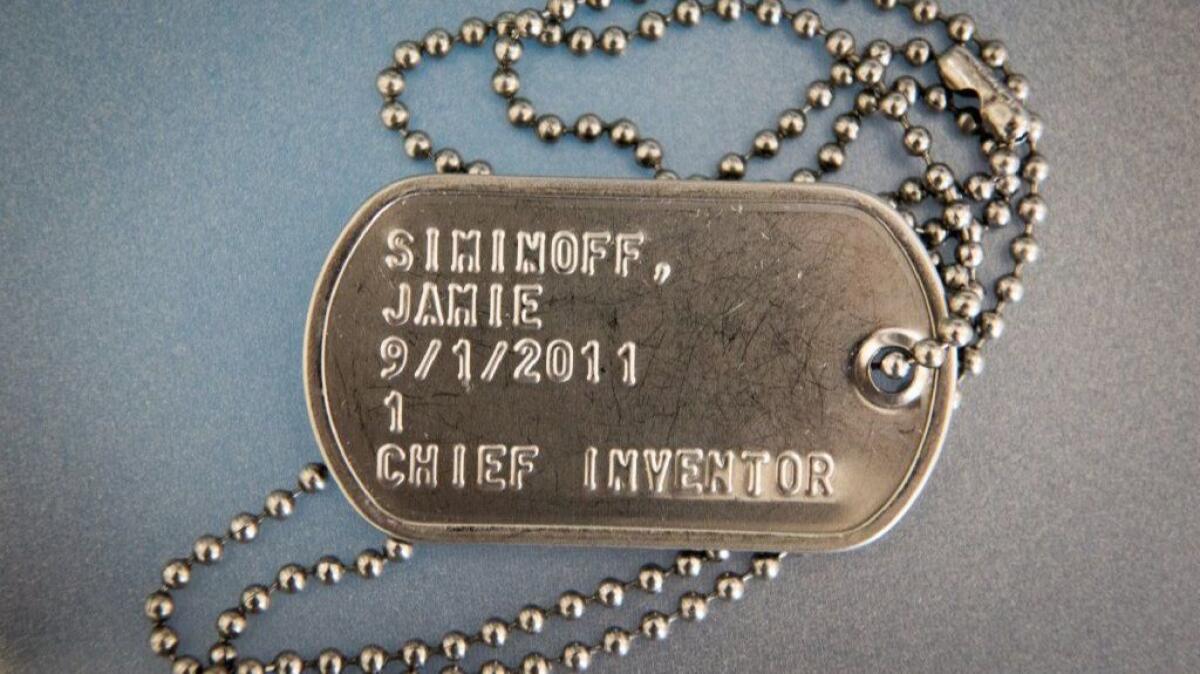
At Ring’s four-building Santa Monica campus, each of the company’s nearly 50 teams has its own vibe — sparkling chandeliers and hip furniture for one, messy desks and dim lights suit others. Siminoff gives team leaders autonomy: no regular management meetings, no budgets. It helps teams stay focused on the company’s mission, he says, rather than performance goals.
His mantra is: “Just don’t waste money.”
Siminoff held out two years before hiring office cleaners to thwart rats and festering garbage (“I got so mad,” he said. “Vacuum? Do it yourself!”) and only introduced a formal lobby this year so guests wouldn’t wander around. Employees move desks themselves during expansions.
He sees himself as an inventor more than a manager, focusing on product concepts and mechanical issues. His touches include a custom leveler and screwdriver in the doorbell package to ease installation for people without a toolbox.
“He sees the world and the problems in the world in a way people don’t see,” Gur said.
Siminoff is front and center in marketing, borrowing from famed electronics inventor James Dyson, whose name for many evokes a sense of high quality when stamped on a product.
“The one thing no one can copy is me,” Siminoff said. “People can copy James Dyson’s vacuum cleaners but they can never be a Dyson.”
Ring board of directors
- Jamie Siminoff, CEO
- Randy Glein, DFJ Growth
- Kevin Dunlap, Shea Ventures
- Adam D'Augelli, True Ventures
- Brett Johnson, SpaceX CFO
- John Costello, former executive Dunkin’ Brands and
Home Depot
Siminoff also coordinates Full Circle, the company’s new charitable arm. It’s funding a six-month program at North Kern State Prison to help inmates learn about technology and empathy, aiming to help the type of people serving time because of footage captured by Ring devices.
Steve Spinelli, a Jiffy Lube co-founder who taught at Babson and now presides over Philadelphia University, said he’s long admired Siminoff’s ability to walk the line between determination and stubbornness. Many entrepreneurs go wrong by not realizing when to cede some control, and Siminoff may be at that crossroads, he said.
“He’s hit a lot of home runs,” Spinelli said. “But who hits third, fourth, fifth in the batting order?”
Ring recently hired a president to buffer Siminoff from distractions. That’s become an issue because Siminoff welcomes ideas from anyone, including users. His e-mail address is on every box to boost the confidence of potential buyers and get direct feedback as a check on employees.
Siminoff says he’s averted one burglary at his home thanks to Ring. Two supposed house cleaners, who he believes were later identified in a newspaper as burglary suspects, had rung to see if anyone was home. Despite answering from the East Coast, he told them off and, as he tells it, spooked them out of his neighborhood.
He answers every time his phone buzzes with a doorbell ring. No matter the circumstance or proper etiquette, he says, if people value their house as much as he does, they’ll find a way to chat with the visitor.
“Delivering presence to the front door is the most important thing,” he said. “I’ve never seen anything that has reduced crime more.”
ALSO
U.S. weighs a ban on laptops on flights from Europe
Can Snap’s stock make a comeback like Facebook’s?
Have State Farm renters' or homeowners' insurance? You may be getting a refund



